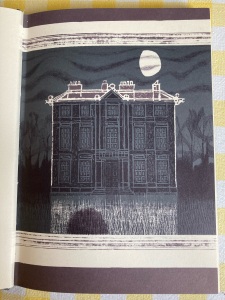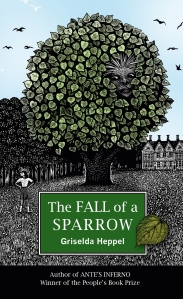Aged 11, I went through a (very brief) interest in horror stories. Tales of travellers arriving at lonely hostelries on Dark and Stormy Nights, maggots crawling over skulls, baths full of blood, that sort of thing. I stopped reading this stuff pretty quickly, not so much out of fear – though that may have played a part – as out of physical revulsion. There must be better ways of giving readers the shivers than all that dismemberment and gore.
A different kettle of fish
Instead, I moved on to ghost stories, finding them to be a completely different kettle of fish, or bath of – never mind.
Because the best kind of ghost story doesn’t hit you with horrific images from page 1; in fact, there will be no horrific images at all. Just a couple of things that don’t feel right. A breeze down a windowless corridor. Footsteps in an empty room. A nursing chair, rocking by itself (a nice image from Susan Hill’s The Woman in Black, possibly inspired by the rocking horse in L M Boston’s The Children of Green Knowe). These details, minor in themselves, build up an atmosphere of uncertainty around a story’s main character and before you, as reader, know it, your heart is beating as hard as theirs is, as they try to understand what’s going on.
M R James and the sense of menace
One of my favourite ghost stories is the great M R James’s The Mezzotint. I am vague as to what exactly a mezzotint is, more than some kind of print. In this case, it’s a poor-quality one sent on approval to the art collector hero of the story, who casts it on one side. Later, he notices a shadow in the bottom lefthand corner. Strange. Hadn’t spotted it before but then he’d only given the print a brief glance, must have missed it. But a last look before bedtime reveals that the shadow has grown into a dark, hunched figure crawling towards the house where – and this definitely wasn’t the case before – a ground floor window is wide open ….. Aaaaaaaaaaaggghh that’s enough for me. No bones, daggers dripping with blood, skeletons rattling chains; just a dull, uninspiring print forming the vehicle for a terrifying sense of menace.
The Fall of a Sparrow – a supernatural thriller
It’s this masterful gliding from the ordinary to the extraordinary, with mysterious happenings being explained away until the evidence has piled so high they can’t be any longer, that I’ve tried to emulate in my latest children’s book. The Fall of a Sparrow is a kind of thriller with a supernatural touch, and while nothing like as dark as M R James’s stories – I don’t want to give my readers nightmares! – there is meant to be something chilling about the strange, awkward little boy who follows around the heroine, Eleanor, from the moment she arrives at her new school. Clearly the small son of one of the teachers; odd that he should take such an interest in her, though.
Odd, too, that the other girls pretend not to notice him hanging around. If they are pretending, that is.
Oh.
(adapted from an article first posted on Authors Electric Blog)




